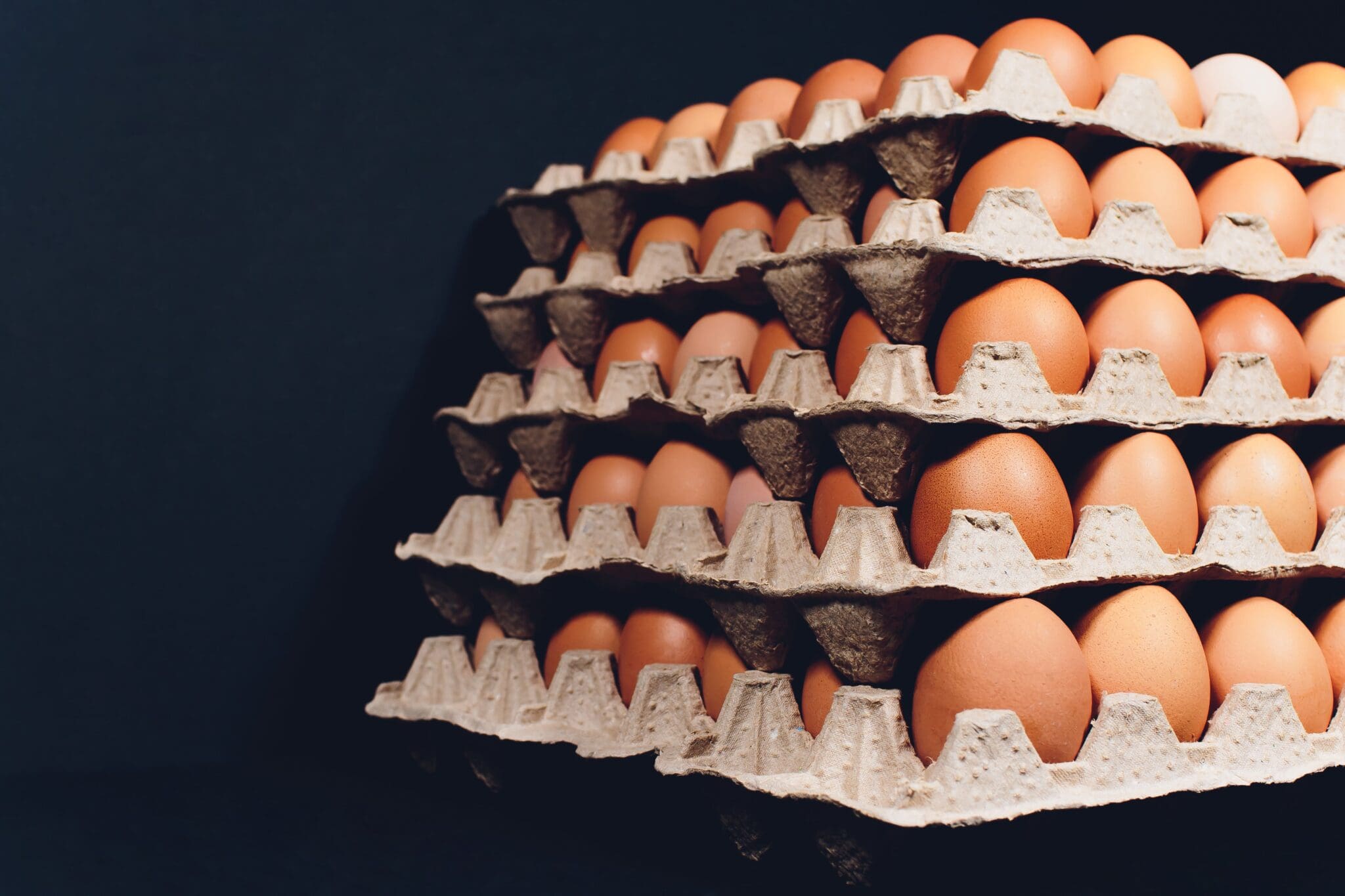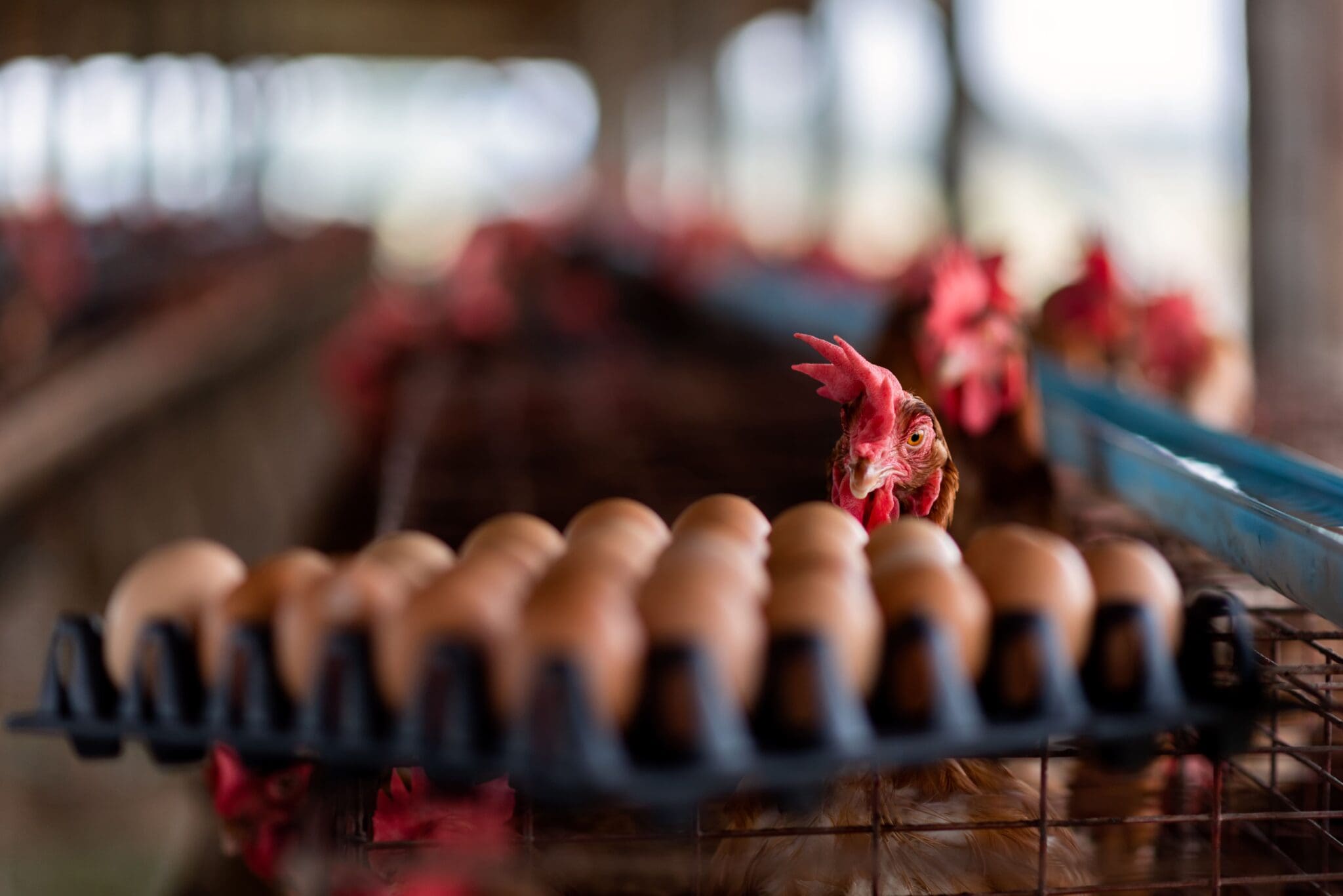The egg industry is undergoing significant transformations, setting ambitious targets for production efficiency and sustainability. Recent outbreaks of avian influenza have led to a reduction in the number of hens, further challenging the industry to enhance its efficiency and sustainability. The ability to produce 500 eggs over 100 weeks requires holistic considerations, and nutritional support will be key, starting with rearing and continuing through peak production to sustain profitable production for the long-life layer.
Eggcellent foundations: Understanding the skeletal development of laying hens during rearing
Understanding the skeletal development of laying hens during the rearing phase is pivotal for optimising their lifelong health and egg-laying capabilities. During rearing, hens undergo rapid growth, and proper development of their skeletal system is essential for supporting the increased body weight and subsequent demands of egg production. Structural bone formation takes place during rearing and concludes once the hen reaches sexual maturity. Medullary bone development will then start approximately two weeks before the first egg is laid. The function of medullary bone is to serve as a source of calcium for eggshell formation, but there is generally also loss of some structural bone during lay. Medullary bone builds up during the early stages of lay and continues to accumulate over the rest of the laying period. Structural bone that has been lost during production will be replaced by medullary bone. Structural bone is stronger than medullary bone and, since the hen only has time during rearing to lay down the structural bone that should last throughout her productive lifetime, this is also the only time the producer and nutritionist can support the hen in proper skeletal development. When a hen has a good skeletal structure, she will have more room for depositing medullary bone and will be less prone to caged layer fatigue later in life.
Macro- and micromineral mastery: Optimising long-life layer feed during rearing
One of the foundations of layer rearing is mineral nutrition. Mineralisation of bone is dependent on macrominerals such as calcium and phosphorus, while microminerals, including copper, zinc, manganese, and selenium, are essential for a variety of physiological processes, spanning from bone development to immune function. Copper, a cofactor for enzymes involved in collagen formation, contributes to bone strength, while zinc plays a pivotal role in immune response and eggshell formation. Manganese influences skeletal development and aids in the activation of enzymes crucial for nutrient utilisation, reinforcing the overall health of rearing hens. Selenium, a potent antioxidant, assumes significance in safeguarding cellular integrity and bolstering the immune system. Precision in formulating layer feed during rearing to meet their specific mineral requirements ensures optimal growth, skeletal resilience, and sustained egg production.
Studies of laying hen chicks have found that supplementing organic forms of zinc, manganese, and copper – either alone or in combination with their inorganic forms – from day old significantly improves bone density at 14 and 26 weeks of age. Furthermore, one such study found significantly increased oviduct weight, proving the involvement of these minerals in other phases of development.
During the rearing phase, hens are exposed to serious stressors, including vaccinations, heat stress, and the physiological changes to becoming a laying hen, and studies have shown the involvement of specifically zinc, manganese, and selenium in improved immunological status. It is also valuable to mention the role zinc plays in the tight cell junctions in the intestinal tract for better intestinal health, as well as wound healing and restoring the integrity of tissues that have been damaged.
The gut connection: Illuminating the crucial role of gut health
Gut health is a cornerstone for overall well-being and productivity in long-life layer rearing. The gastrointestinal tract of young layer birds plays a multifaceted role, extending beyond digestion to profoundly influence nutrient absorption, immune function, and even some behavioural aspects.
Refined functional carbohydrates (RFCTM) are a nutritional tool that can effectively be used to support immune function and promote gut health and thereby support these birds as they experience various stressors. RFC have been shown to effectively inhibit the adhesion of pathogenic bacteria such as Salmonella spp. and Clostridium jejuni to the gut wall of the gastrointestinal tract. In addition to RFC, a well-developed probiotic will further improve the gut health and immunity of birds. The benefit of adding a probiotic lies in the positive effect it has on modulating and improving the intestinal microbial balance. In this case, choosing a probiotic that contains more than one strain allows for broader control and growth inhibition of non-beneficial bacteria and reduces the population of avian pathogenic Escherichia coli (APEC). Furthermore, a probiotic has the potential to modulate the intestinal immune system, reducing inflammation caused by a challenge in the gut and improving gut structure, leading to improved nutrient absorption.
Cracking the code: Calcium and phosphorus dynamics in long-life layer diets
In the quest to increase the efficiency and sustainability of saleable egg production, the delicate balance between calcium and phosphorus has become extremely important. Calcium (Ca), a fundamental component of eggshells, ensures the structural integrity and strength of the developing shell. In conjunction with vitamin D, calcium orchestrates the intricate hormonal dance necessary for successful eggshell formation. Phosphorus (P), on the other hand, is integral to bone mineralisation, contributing to the formation of a sturdy skeletal framework. Achieving the right calcium-to-phosphorus ratio is crucial for optimal skeletal health.
Recent studies challenge the currently accepted phosphorous requirement, emphasising the need for precise formulation. According to a meta-analysis done in Germany on the phosphorus requirements of laying hens, they found that the requirement is only 2,2 g/kg P in a diet supplied with between 35 g Ca/kg and 40 g Ca/kg of feed throughout the laying cycle. It is important to note that this requirement is without the supplementation of phytase and with its supplementation this number becomes even lower. This team also looked at the effect of high-Ca vs low-Ca diets with different levels of phosphorous and found that higher calcium levels led to more phosphorous being available at the terminal ileum.
Micro marvels: The crucial role of trace minerals in elevating eggshell quality
Microminerals, including zinc, manganese, and copper, play a significant role in eggshell quality. These trace elements, though required in small quantities, have a big influence on the structural integrity and resilience of eggshells. Zinc is part of the enzyme carbonic anhydrase, which is critical for supplying carbonate ions for eggshell formation. A diet deficient in manganese is known to result in eggs with thinner shells with more translucent areas and abnormalities, and a copper deficiency is known to result in eggs that show abnormal shell formation.
The positive effects on shell quality and a significant reduction in the percentage of cracks when feeding the organic form of these minerals have been proven by numerous studies at different stages of production. Also encouraging are the results of a study performed on older laying hens (starting at the age of 78 weeks) that showed significant improvements in tibia density at 98 weeks and is profound proof that a good source of organic minerals can provide the necessary support for the long-life layer.

Heat stress: Unravelling the detrimental impact on laying hens
During heat stress, a common challenge on layer farms, many physiological changes are occurring, including increasing levels of corticosterone leading to immunosuppression, altered hormone levels, and altered blood pressure. In addition, gut epithelial integrity also tends to decrease, while there will often be a reduction in feed intake, ultimately resulting in decreased production and economic losses. A recent study has also shown that heat stress can lead to lung damage due to inflammatory responses.
The mineral chromium (Cr) is a valuable tool for the management of heat stress. A recent study compared two different sources of chromium (Cr-picolinate or Cr-Pic, and Cr-histidine or Cr-His) to a control diet containing no chromium supplementation in hens exposed to temperatures of 34°C. The hens that were fed chromium showed significantly better egg production, egg weight, eggshell strength, and Haugh units compared to those not supplemented. Moreover, the group receiving Cr-His showed further improvements above the Cr-Pic group, indicating that Cr-His may be superior in bioavailability and better able to support performance.
Liver health lament: The impact of hepatic challenges on laying hens
Fatty liver disease can be a common occurrence in laying hen production. The liver plays a crucial role in calcium metabolism through its involvement in the synthesis and regulation of hormones that influence calcium homeostasis. While the primary organs associated with calcium regulation are the bones, kidneys, and intestines, the liver indirectly contributes to maintaining the calcium balance in the body through several key processes. These include vitamin D activation, contributing to the synthesis of calcitonin – a hormone that promotes calcium deposition in the bones – and synthesis of insulin-like growth factor 1 (IGF-1), which plays a role in bone mineralisation. Compromised liver function in laying hens disrupts metabolic pathways related to calcium metabolism, leading to impaired absorption and utilisation, which manifests in reduced egg production and eggshell quality. Additionally, the detoxification capacity of the liver diminishes, rendering hens more susceptible to environmental toxins and mycotoxins present in feed.
Betaine, which is a naturally occurring compound, can play a significant role in alleviating liver damage and would, therefore, be recommended to be included as additional support in rearing hen nutrition as well as throughout production. Betaine acts as a methyl donor in various metabolic processes, including the methionine cycle, which plays a crucial role in liver function. By donating methyl groups, betaine helps in the synthesis of phosphatidylcholine, an essential component of cell membranes, and aids in the breakdown of homocysteine, reducing its toxicity to the liver. Betaine can help regulate lipid metabolism by promoting the export of triglycerides from the liver, thereby reducing the accumulation of fat in the liver (hepatic steatosis). This is important in preventing and treating fatty liver disease in laying hens. Furthermore, betaine has antioxidant properties that protect liver cells from oxidative stress and damage and can help neutralise harmful free radicals, reducing inflammation and oxidative damage to the liver. Betaine has even been shown to significantly improve tibia density and tibia breaking strength in hens between the ages of 45 and 70 weeks.

The future of nutrition-driven long-life layer production
As our understanding of the complex relationship between nutrition and genetics expands, the opportunity for long-life layer production looks promising. Nutritional interventions have the potential to not only extend the productive lifespan of layers but also improve the quality of the eggs they produce.
By addressing the nutritional needs of long-life layers with precision nutrition, optimised feed formulations, and appropriate management practices, we can achieve the goal of 500 eggs produced in 100 weeks.
Anneleen Swanepoel is a poultry layer specialist at Chemuniqué. She holds a bachelor's degree in animal science from the University of Pretoria, as well as a master's degree in aquaculture from Auburn University in the United States.









